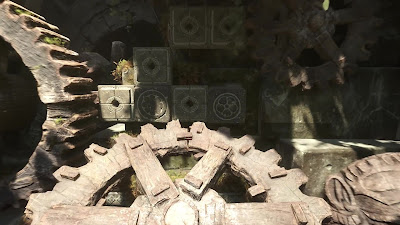Analyzing Indiana Jones and the Great Circle
A Lesson in Chaotic Character and Culminating Calculated Madness.
Watching an antagonist's facial features squirm in slow motion brings tremendous joy. For Nazi's watching a spanner spin towards their temple achieves pure entertainment. The way his eyes bulge, knees buckle, and body contorts like a dainty deck chair at a poorly constructed picnic is soft absurd and euphoric.
The Fine Art of Controlled Madness.
Indiana Jones and the Great Circle depicts a concept that very few action games have: violence is not simply damage dealt or a hit reaction. It is rhythm. The way enemies stagger, flail, and fall down is not merely functional; it is hilarious choreography. The stealth kills are not bat executions; they are slapstick routines. A chokehold is now a vaudeville gag. A hammer that is tossed becomes a punchline with impeccable timing.
Still, under that caricature world, where everything looks comical, it bears heaviness. The bruised eyes, the busted lips, and the way a goon grabs his belly after a viciously inflicted punch. These are not simply aesthetic embellishments. They are feedback. And Indiana Jones and the Great Circle seems to be better than ever. Every conflict impacts in some capacity. Each skirmish removes something, not just from the opponent but from the reality as well.
The Sound of a Voice That Shouldn't Work—But Does
This is something Troy Baker shouldn't have been able to effortlessly execute. An impressively iconic character is often condemned to unoriginal and shallow impersonation by people attempting to recreate their voice. Most of them lean too far towards their own interpretation of the character, and they have strayed too far from the actual depiction. Baker does neither. The way he breathes life into Indiana Jones rather than simply imitating Harrison Ford is nothing short of impressive. The smirk, along with the voice crack when he lowers his tone and whispers, "Carrying all of those was definitely not how this works," paints a vivid illustration of just how astonishing performing acts he does. That is not an act, it is possession.
Gina Lombardi is now a different story. The character, "designated female lead,” does not portray the expected or required "love interest,” but a person. Self-centered, inflexible, sharp, and completely uninterested in the damsel role. When she and Indy argue, there is no flirty banter. They only respect each other too much to pull punches as some curtsies.
Now that is something new. Marios Gavrillis creates Emmerich Voss as a character who is completely pathetic and utterly heinous at the same time. Side-splittingly insane and horrifying, he both throws passionate fits and delivers speeches worthy of Shakespeare. His death isn't just satisfying; standing up and clapping cinematic masterstroke fairytale revenge. In the end, it becomes theater.
And Tony Todd, my goodness. Tony Todd. You can buy Xbox adventure games like this one for him only. Even in his last performance, he continues to dominate every single scene as Locus. That voice could read out a grocery list and make it sound like a prophecy.
Writing That Doesn't Treat You Like an Idiot
No characters who talk in hashtags. No absurdly witty one-liners that seem like they were borrowed from Marvel. There's no mindless dialogue here. When Indy curses, it's not for the sake of a cheap laugh—it's because he barely dodged death again. When Voss goes on about the demented fury of destiny, it's not villainy; it's the disillusioned ardor of a man who needs to, desperately, believe that he matters. And the tale also does not stroll you through. That unspoken, the silence of a glance, the silence contained in unfinished sentences, is something the game expects you to comprehend. Not a game that explains itself, but one that unfolds.
A Game That Doesn’t Just Adapt Indiana Jones – It Becomes Him
Most licensed games come off as half-assed attempts at cash grabs—they look like they’re wearing ripped off someone else’s skin. The Great Circle doesn't just wear Indy's fedora, it claims it, and if you are one of those who buy Xbox games for Series X, you have no choice - you have to get it. The traps, the ancient ruins, the way hieroglyphics cry in agony under step—they all capture the essence of one of the original films. It's like Indiana Jones wasn't just adapted by Machine Games, he was truly brought back to life.
This isn't nostalgia bait. It's alchemy.
The Science Behind the Madness
And yet, beneath all that charm, there's a machine. The system. Every punch, every shot, every secret weapon offscreen—there's always a hidden trail. All of it, I track. Relentlessly.
How many frames does it take for an enemy to react after a whip crack? Checked.
What is the optimal angle for chair throwing to achieve maximum stumble duration? Ticked the box.
The exact pixel where the Ark's reflection tangentially shines in the background during chapter seven? I checked again.
This is beyond play. It's an active investigation. Each death is a case study, and each achievement is a hypothesis. Winning is no longer the singular objective—understanding is.
And when it all makes sense—the perfect equation, the numbers falling into place, and the cacophony yielding to command—now that is the true bounty.








Comments
Post a Comment